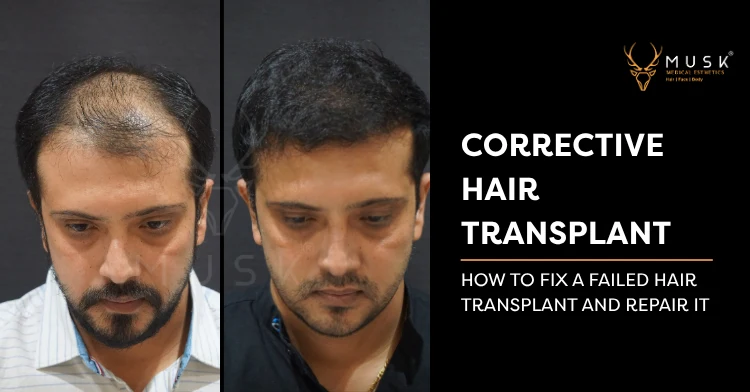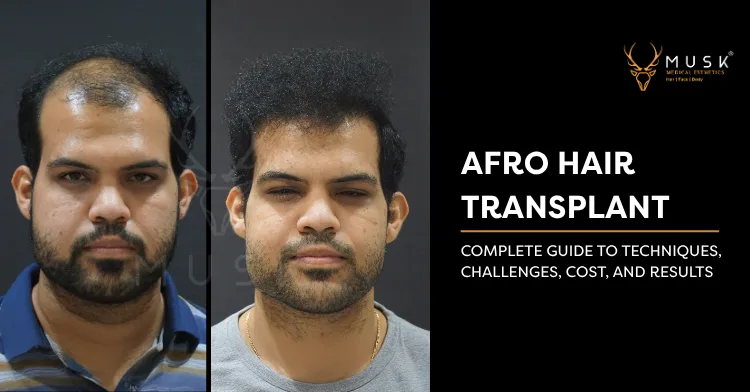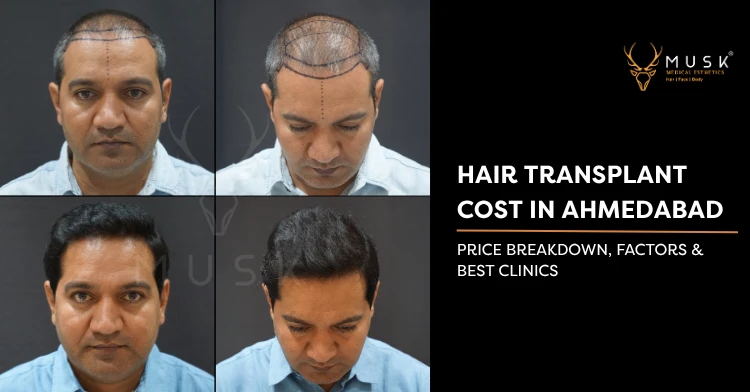What Is A Widow’s Peak? All You Need To Know

Ever glanced in mirror and noticed that V-shape at the center of your hairline. That’s widow’s peak. But you’re not alone; some people have a noticeable one, while others might not realize they have it.
Widow’s peak hairline leads to feeling of insecurity and low confidence. It also has given rise to various myths and folklore, but beyond that it holds scientific interest which you will learn here.
Explore about widow’s peak hairline, their characteristics, common misconceptions and more in this blog.
What is a Widow’s Peak?
A widow’s peak is a distinctive hairline shape characterized by a pointed, V-shaped indentation at the center of the forehead.
It’s a common feature that varies in prominence from person to person. Despite its name, it has no connection to actual widowhood which is simply a genetic trait.
What Are Causes of Widow’s Peak?
- Genetics: A widow’s peak is typically inherited as an autosomal dominant trait. This means that if one parent has a widow’s peak, there’s a 50% chance that their child will inherit the trait. The gene responsible for this trait affects the shape of the hairline.
- Normal Variation: In many cases, a widow’s peak hairline is simply a normal variation in human hairline patterns and doesn’t indicate any underlying medical condition.
Genetic Conditions Associated With Widow’s Peak
While a widow’s peak itself is generally a benign trait, it can sometimes be associated with other genetic conditions, although this is less common. Some genetic conditions that might be associated with a widow’s peak include:
- Frontal Fibrosing Alopecia
- Pachyonychia Congenita
- Ectodermal Dysplasias
- Cleidocranial Dysostosis
Signs/Characteristics of Widow’s Peak Hairline
1. V-Shaped Hairline
The most defining feature is the central indentation in the hairline, forming a V-shape or pointing at the center of the forehead. This creates a noticeable dip in the hairline compared to the more rounded or straight hairlines seen in other individuals.
2. Symmetry
The V-shape of a widow’s peak hairline is typically symmetrical, with both sides curving downward towards the central point. The depth and sharpness of the V can vary from person to person.
3. Forehead Shape
A widow’s peak hairline often gives the forehead a distinctive appearance, with a pronounced dip at the hairline. This can sometimes make the forehead look slightly more prominent or angular.
4. Hair Growth Patterns
Individuals with a widow’s peak often have a natural tendency for their hair to grow in a pattern that accentuates the V-shape. The hairline may also recede in a way that maintains the widow’s peak shape even as they age.
5. Variation in Prominence
The prominence of a widow’s peak can vary greatly. For some people, it may be very pronounced and sharply defined, while for others it might be more subtle and less noticeable.
6. No Associated Symptoms
A widow’s peak is typically a cosmetic trait with no associated symptoms or health concerns. It doesn’t generally affect hair growth or hair health.
How to Treat Widow’s Peak Hair?
1. Hairstyling Techniques
You can opt for hairstyles that can minimize or enhance the appearance of a widow’s peak. For example, bangs or fringes can cover or soften the V-shape. Side-swept bangs or longer layers can balance the hairline. Another option is hair color, use hair color strategically to divert attention from the widow’s peak. Highlights or dimensional coloring can help blend the peak with the rest of the hair.
2. Hair Treatments
Hair extensions or wigs can be used to completely change the look and cover the widow’s peak. Extensions can add volume and change the overall style, while wigs provide a versatile alternative. Hair thickening products such as shampoos, conditioners, and styling products designed to add volume can soften the appearance of a widow’s peak by increasing the fullness around the hairline.
3. Hairline Surgery
For those seeking a permanent change, hairline lowering surgery (forehead reduction surgery) can move the hairline forward and reduce the prominence of a widow’s peak. This involves surgical procedures and recovery time, so it’s important to consult with a qualified surgeon to understand the risks and benefits.
4. Hair Transplant
A hair transplant for a widow’s peak hairline involves relocating hair follicles from a donor area to the area with the widow’s peak. The procedure can be performed using:
- Follicular Unit Extraction (FUE): Individual follicles are extracted and implanted.
- Follicular Unit Transplantation (FUT): A strip of scalp is removed, and follicles are transplanted from that strip.
5. Laser Hair Removal
Although less common, laser hair removal can be used to alter the hairline by removing hair from specific areas. This can be an option for those seeking more dramatic and permanent changes.
Is a Widow’s Peak the Same As Receding Hairline?
Many misconceptions leave this question remain unanswered, but here is the thing. A widow’s peak and receding hairline are not the same.
A widow’s peak is a natural hairline shape where the hairline forms a distinct V-shape at the center of the forehead, which is a genetic trait present from birth.
A receding hairline is a hair loss or thinning hair that occurs over time, especially after puberty in men when their hair naturally starts to thin out with age. It’s often associated with male pattern baldness.
While a receding hairline sometime mimic the shape of a widow’s peak, the key difference lies in whether the hairline has always been that shape or if it’s a result of hair loss.
Is a Widow’s Peak a Sign of Balding?
This is not necessarily true; widow’s peak and receding hair line may look alike but share huge difference. A widow’s peak is a natural hairline shape that you’re born with. This feature remains constant throughout one’s life and is not influenced by hair loss.
Why Do Some People Want to Get Rid of a Widow’s Peak?
A widow’s peak is a natural hairline variation, as unique as eye color or freckles. It’s a feature that has adorned the foreheads of many iconic figures, adding a distinctive touch to their appearance.
However, social beauty standards often promote uniformity, which can influence how individuals perceive their unique features. Some people with widow’s peaks might feel self-conscious about standing out, especially if they associate it with aging or limited hairstyle options.
While there are numerous hairstyles that complement a widow’s peak, personal preference and confidence can play a significant role in how it’s perceived.
Conclusion
If you’re considering hair transplant as a treatment for widow’s peak hairline, then let us tell you that it’s the best of kind. Musk Clinic offers top-notch hair transplant treatments utilizing the latest technologies and hair transplant methods.
We assure you the best hair transplant treatment for widow’s peak hair, get the most result-oriented treatment with our team.










